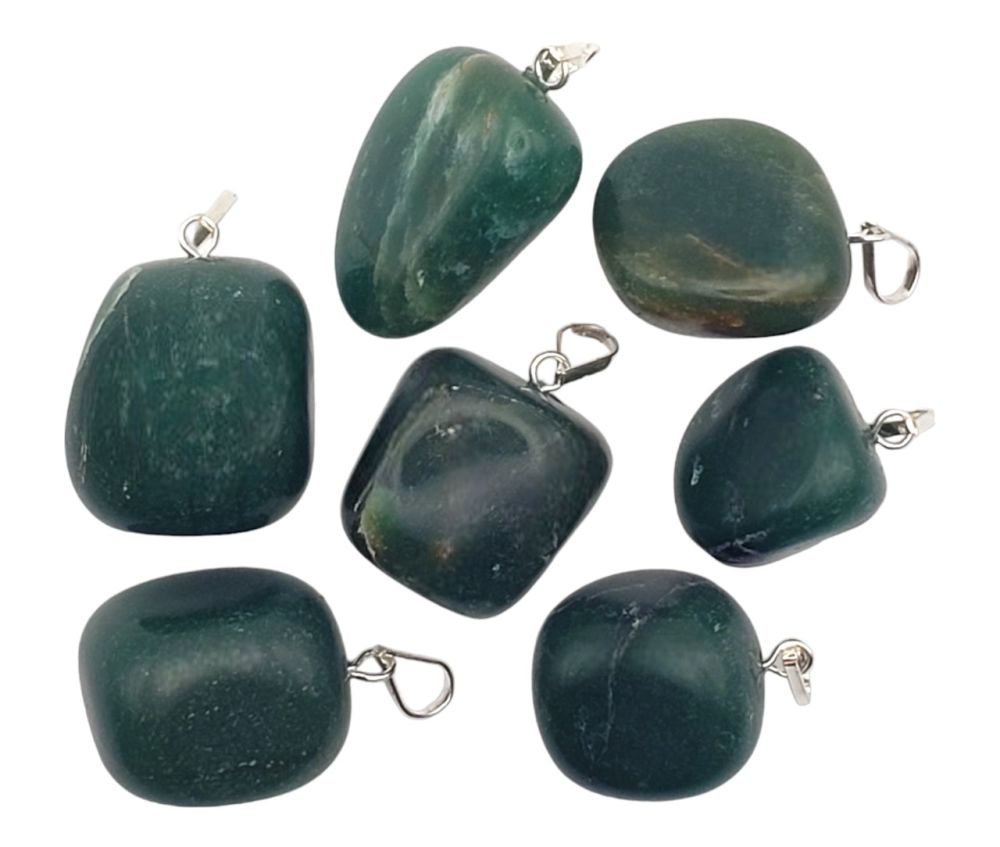We use cookies to make your experience better.
TimmersGems has a new website, existing customers also need to register again.
Drilled pendants of Nephrite, green Jade variety from India with drilled silver pin & hanging eye.
Good quality pendants made of various types of beautiful gemstones, which are completely manually drilled and provided with a silver pin.
Availability:
In stock
SKU
120708
- Buy 25 for €1.50 each and save 25%
Nephrite is a mineral with a densely felted actinolite. It has the chemical composition Ca2(Mg,Fe)5[(OH,F)(Si4O11)]2. The name is derived from the Ancient Greek word nephros - kidney. Nephrite has been known since ancient times, as numerous archaeological discoveries have shown. Due to its toughness, nephrite is suitable for making tools. Later they made decorative objects from it. In Babylon, nephrite was particularly prized because it was believed to have magical powers. In China, nephrite had great mythological significance and was used in religious ceremonies. It was very popular in Central America even before the arrival of Columbus. According to the Sumerians, nephrite was able to solve unexpected circumstances. It was claimed that it could cure kidney disease and renal colic. Nephrite is more common in nature than jadeite. Sometimes it forms large blocks. Stones weighing more than 5 tons have been found in Russia. A nephrite block weighing 30 tons has even been found in Burma. Historically important deposits are located in China, around Khotan in Sinkiang Province, in the Kunlun Mountains and in the Kashgar area. Cat's eye nephrites occur in Taiwan and Jordan. In the United States, nephrite is found in Brazil, Oregon, Utah, Wyoming and Alaska. Important deposits are known in New Zealand. The Maori were already extracting nephrite before the arrival of the Europeans in Arakuara and Lake Wakapitu. These stones are translucent and are considered the most beautiful nephrites in the world. Smaller occurrences have been documented in Australia, Kazakhstan, Poland, Germany, Switzerland, Italy and Ireland.
| Dimensions | Divers |
|---|---|
| Country of Manufacture | India |












